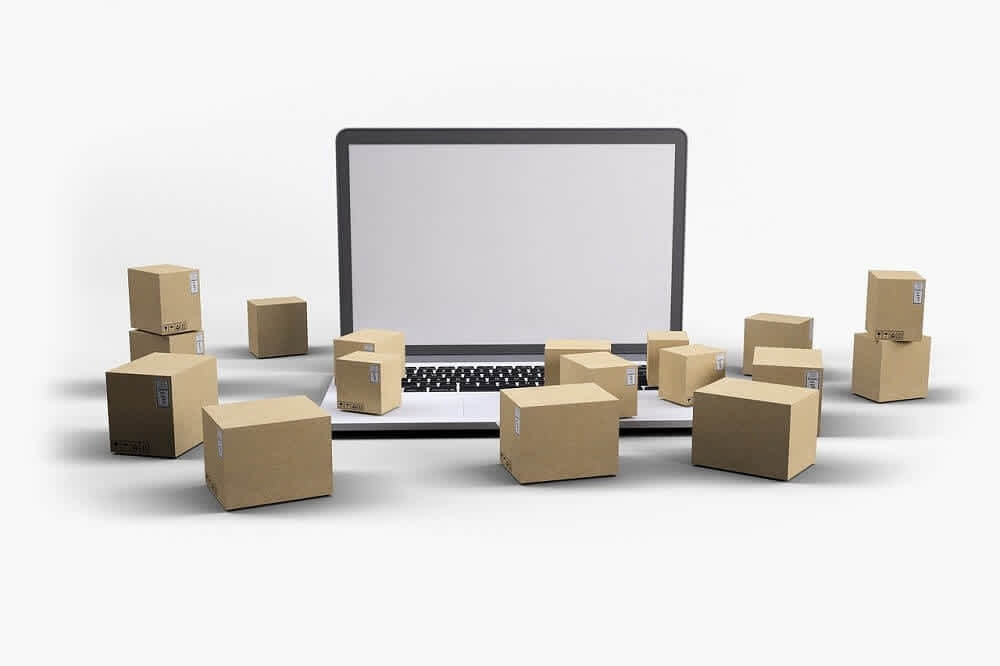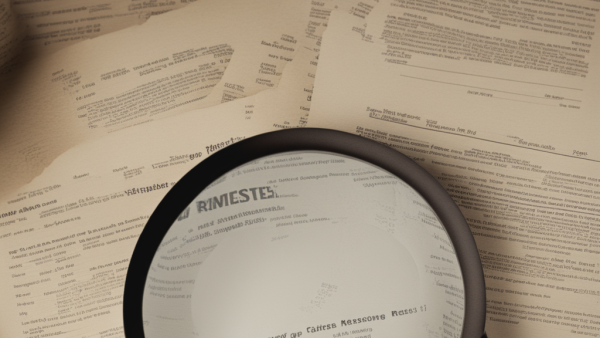
by Sam Franklin | August 10, 2022 | 16 min read
The complete Amazon fulfilment guide for UK eCommerce merchants
Get fundedLast updated: September 02, 2022
When deciding on which major platforms to sell on, eCommerce companies are now spoilt for choice. Alongside forging their own platform, they can select from a range of major fulfilment platforms. One of the leading third-party fulfilment platforms is the eCommerce giant themselves, Amazon.
Considering that Amazon has over 2.45 billion monthly visitors, there truly isn’t a busier online marketplace that eCommerce sellers can turn to. In this article, we’ll be taking a deep dive into Amazon FBA, discussing how Amazon fulfilment works, its pros and cons, its associated fees, and absolutely everything else that you need to know.
Let’s get right into it.
Table of contents
- What is Amazon FBA?
- How Amazon FBA works
- Why Amazon FBA?
- What are the benefits of Amazon’s FBA?
- What are the cons of Amazon Fulfilment?
- Amazon fulfilment fees and FBA fees
- Amazon Fulfilment Centre FAQ
- Conclusion
What is Amazon FBA?
The eCommerce giant Amazon has a platform where sellers can outsource order fulfilment to one of their warehouses. Known as Fulfilled By Amazon, or Amazon FBA, this service allows businesses to send their products to an Amazon fulfilment centre and have them take care of logistics.
Instead of having to collect products, package them, and ship them once an order comes in, sellers will send all of their products directly to one of Amazon’s many fulfilment centres around the UK. From there, whenever an order comes in, Amazon is notified, with their in-house team then finding the correct products, packaging them, and shipping them to your customer.
Alongside covering the logistical element of the process, Amazon also covers both customer service and any returns, meaning you can effectively hand over your business's storage and shipping elements directly to Amazon.
With logistics covered, fulfilment by Amazon ensures you have more time to focus on growing your business in other ways. Instead of spending hours each day packaging items when orders come in, you’ll be able to directly focus on scaling your business, honing your marketing, and developing new products.
How Amazon FBA works
From the fact that Amazon provides customer service to the complete coverage of logistics, Amazon fulfilment does seem like the total package. As the FBA service covers so much, entrepreneurs see this as an exciting opportunity to scale their business. It also takes an element of pressure off the day-to-day running of their company.
That said, if fulfilment centres are a new concept to you, you’ll likely have a range of questions about exactly how this service works. To help demystify the process, we’ll quickly move through the top questions related to this field:
How do I get started with Amazon FBA?
What is FBA Inventory Management?
What products can I list through Amazon fulfilment?
Let’s break these down.
How to get started with Amazon FBA
Getting started with Amazon FBA is actually a strikingly easy process. The first step is to create an account with FBA. This will allow you to register your Amazon selling account, access the Seller’s Central platform, and begin tinker with your business's specifics.
Once you’ve created your account, you can now list items from your company directly on the Amazon store. With millions of active users that browse Amazon every single day, this can dramatically increase the total number of users that see your products, interact with them, and even end up buying them.
Within the Seller’s Marketplace, you should create listings for your main products. When creating these listings, specify that they are for the FBA inventory. Once you’ve done this, you’ll be given further details on how to get your products to the Amazon Warehouses for shipping.
Typically, that process looks something like this:
Using a unique ID, you’ll be able to print off shipping labels for your products and stick them on.
You’ll then ship your merchandise in bulk to the Amazon warehouse that was specified for you.
Once your products arrive at an Amazon fulfilment centre, they will be put on the shelves.
The specific warehouse will get a notification whenever someone buys one of your products through Amazon.
The team behind Amazon fulfilment will then spring into action, collecting your products, packaging them, and shipping them to your clients.
Every two weeks, Amazon will total up all the money you’ve made through their store, and then pay that directly into your bank account. Of course, they don’t offer this service for free, with the fulfilment fees they charge being something we’ll come to shortly.
However, fees aside, Amazon FBA means that you can take a step back from the logistics process, with Amazon covering every aspect of shipping and delivery.
What is FBA Inventory Management?
After you’ve created an account, listed your products, and shipped them to an Amazon warehouse facility, you’ll then have access to what is known as FBA Inventory Management (FBA IM). This central hub is where you can control every aspect of how Amazon manages your stock. Everything is available from this location, from creating specific shipping plans to coordinating restocks and even monitoring shipments they’ve sent out.
The inventory management system is where you’ll find all the information about your products, what items are in their warehouses, and how many of each item you have left. Your inventory management allows you to get a warning ahead of time whenever you need to reorder stock, monitor your inventory levels, liquidate stock, or remove an item that’s no longer selling well.
Of course, the management system also depends on the size of your business, the nature of which products you sell, and which selling channels you serve. If your eCommerce business focuses on perishable items, then you’ll have a much greater need to use these inventory tools carefully. The more inventory you store and the longer it's there will result in higher storage fees, so it's always best to stay on top of these figures.
From managing how much inventory you store at Amazon at any given time to accessing a range of advanced inventory performance dashboard displays, FBA IM will be your go-to system as an Amazon seller.
What products can I list through Amazon FBA?
When you create an account as an FBA seller, you’re given the option to deeply customise the merchandise you will sell. From choosing core Amazon categories like books, electronics, fitness, garden, health, or something else, you’ll be able to slot yourself into one of many categories.
Anything that can be sold on Amazon can typically be listed through FBA. There is one major product that cannot be sold on Amazon FBA, which is anything that relates to currency; coins, cash alternatives, and gift cards are all prohibited.
Apart from that, essentially anything you can think of can be stored with and processed by one of Amazon’s fulfilment centres.
What is Amazon’s Inventory Performance Index?
Amazon’s Inventory Performance Index, also known as IPI, is a metric that Amazon has been using since early 2020. This index is a measure of how productive and effective you are at managing your inventory within Amazon’s warehouses.
Your IPI score is influenced by four central categories:
Inventory age - Excess inventory costs money with amazon, with storage fees being much higher if you miscalculate how much product you expect to sell. As a rule of thumb, Amazon wants to ensure that you have between 30 and 60 days of expected sales of a product in their facilities at any given period. Any more than this, and you’ll be paying for excess inventory storage; any less, and you could run out of product and lose out on sales.
Sell-through rate - Over a 90-day period, Amazon gives their sellers a sell-through rate which determines their overall balance of inventory over this period. This calculates how effectively they are watching their inventory, being sure to send more product when the warehouse is running low, and sending less when an item is underperforming.
Standard listing - If any of your inventory is stranded or your listings are broken, then Amazon will penalise your account with a low IPI rating for this category.
Popular stock - If you have a certain item on the Amazon fulfilment scheme that sells considerably more than others, there will be a much higher demand for you to replenish that item in the store. Amazon gives you a generated score for how well you keep your most popular items in stock, penalising you if people are attempting to buy a product that they have run out of in their warehouse. Be sure to always send Amazon enough stock, helping to keep your business running smoothly and sales coming in.
Across these metrics, you’re given an overall score of between 0-1000, with 1000 being the very best possible. If your IPI falls below 350, then Amazon will limit your account’s ability to deliver more products to the warehouse. Equally, if any excess inventory is currently sitting in their warehouse, they will charge a fixed fee to the client.
The penalties and fees can be severe with fulfilment by Amazon, meaning you should always endeavour to make your IPI rating something you’re completely familiar with and stay on top of.
Why Amazon FBA?
With over 175 fulfilment centres around the globe with over 150 million sq ft of storage space, there is a reason that Amazon FBA is one of the most popular third-party logistics programs internationally. Alongside the sheer score that this FBA business model offers, you’re also in a prime position to get a range of other benefits that being associated with Amazon entails.
Amazon started their FBA programme back in 2006, using its over a decade of experience to fine-tune its fulfilment services. As the dominant voice in international eCommerce sales, there is a lot to learn from this brand and a whole range of advantages to obtain.
What are the benefits of Amazon’s FBA?
Typically, sellers that work with Amazon are in a prime position to gain access to the following six benefits:
Lower-cost shipping - Due to Amazon’s long-established relationship with a range of internationally renowned shipping carriers, they have forged a range of deals that heartily discount the amount it costs to ship a package. Instead of paying industry rates with shipping companies like FedEx or USPS, you’ll get shipping at a significantly reduced figure, allowing you to ship your products to your customers for a fraction of the total shipping cost.
Association with Amazon - When you list your products through fulfilment by Amazon, all of your products are automatically entered into Amazon’s own web system. This ensures that your items have a chance to come up whenever someone is browsing Amazon looking for a product. This additional exposure to the millions of people that use Amazon daily can be a huge advantage for your business, helping you find new customers and increase your overall sales.
Fast shipping policies - Amazon has huge networks worldwide, with their established shipping plan ensuring that you can get your packages to wherever they need to go with ease. From making use of their two-day free shipping for Prime members to even getting the ability to create shipping plans that work internationally, your shipping speeds will seriously increase when you work with Amazon.
Storage space - If you’re currently storing all of your products in your own home and using it as a central base of operations for your business, then you’re likely surrounded by clutter. By working with Amazon’s fulfilment platform, you’re able to move all of your products to one of their facilities. With this, you’ll be able to pay a monthly storage fee and never have to worry about your inventory storage clogging up your home.
Customer management - Partnering with Amazon means that you also gain access to FBA customer support. Whenever there is a customer issue with one of your products, Amazon will sort out the issue for you. Considering that Amazon’s trusted customer service is one of the most expansive in the world, this can be a huge benefit when you’re used to dealing with customers yourself.
Returns management - Another service Amazon provides when you partner with them is complete returns management. If a customer wants to return a product, Amazon will walk them through the process, ensuring that the package ends up back at one of their storage facilities. After assessing the quality of the product, Amazon will then determine if it can be put back on the shelves or discarded.
These comprehensive benefits are only the beginning, with Amazon offering a comprehensive package of benefits for those willing to work through the Amazon marketplace.
What are the cons of Amazon Fulfilment?
Although there are many benefits to working with one of the Amazon fulfilment centres, that doesn’t mean that there aren’t any downsides. In fact, most of the time, this form of online business heavily favours sellers that already have a lot of experience and are generating lots of sales.
If you’re just starting up, then there can be many more FBA costs than perhaps are first apparent. From selling fees to shipping costs and even storage fees, this isn’t a one-size-fits-all solution for eCommerce platforms.
There are four main cons when you decide to become one of the many Amazon sellers working through FBA:
Can be costly - While any fulfilment platform can be incredibly useful, decreasing the amount of work you need to put in to make your business run effectively, it doesn’t come without any costs. Fulfilment by Amazon charges many different fees, meaning that for those not yet raking in a good amount of money, it might be better to stick to home-fulfilment. If you’re unsure about how much your monthly inventory storage fees will turn out as, we suggest that you use our FBA fee calculator to get a better idea of exactly how much this service will cost you.
Increased returns - Unlike when running your own eCommerce platform, Amazon sellers often experience a much higher rate of returns than normal. This is due to the fact that with the convenience of returning an item through Amazon, many people will buy things and then return them without blinking twice. While this isn’t necessarily disastrous, the returns processing fee that Amazon charges can rapidly build up and leave you in a pickle.
Storage fees - All of the fulfilment centres operated by Amazon charge long-term storage fees to their users. This means that if your items are sitting on your shelves for a longer amount of time than Amazon deems acceptable, they’ll begin to charge you more for occupying that space. Over time, these long-term storage fees can add up and cause a real burden to eCommerce sellers.
Initial work - The first step towards working with FBA is to ship all of your products to their warehouses. To make sure that your products are processed correctly and fit the specification, there will be quite a lot of preparation on your part. You’ll have to package everything, ensure it is all properly labelled (following Amazon’s guidelines), and then ship them to the warehouse. If you’re unfamiliar with the process, this can be fairly time-consuming.
Of course, alongside these downsides, there will always be a cost implication when working with Amazon. Let’s break down those costs in more detail.
Amazon fulfilment fees and FBA fees
You need to take into account several costs to Amazon fulfilment when using this system. Remember that although it’s a wonderful service, Amazon FBA costs money, and you’ll need to incorporate these numbers into your profit calculations. If you’re looking for an easier way of doing this, then refer to our FBA revenue calculation for more information on how much you could potentially make.
Fulfilment by Amazon charges its clients in four key areas:
Selling plan - If you have the professional seller plan, then you’ll pay a flat rate of $39.99 for Amazon FBA no matter how many units you move. If you have the individual seller plan, then you’ll have to pay a flat fee of $0.99 on every item you sell.
Referral fees - Depending on which category your product falls into, Amazon will charge a referral fee based on helping you to get that particular customer. These fees will range from 8%-15% based on which items you’re selling and what categories you are using.
Fulfilment fee - Amazon charges a fee based on how much a package weighs and its dimensions.
Other costs - The Amazon FBA fees don’t stop there, with Amazon charging for inventory fees, refund administration, and other premium services.
As you can see, these fees will quickly add up if you don’t stay on top of your Amazon listings. When working through FBA, you’ll have to attach a credit card to your account where Amazon bills all of your fees (if your profit doesn’t cover them).
Amazon Fulfilment Centre FAQ
Let’s quickly move through all of the main Amazon Fulfilment Centre FAQs.
Is Amazon FBA suitable for all businesses?
Yes, absolutely any business that is actively selling products that fit into the Amazon sellers network can become part of FBA. Simply double-check that your products are currently selling on Amazon, and you’ll be good to go.
Are fulfilment by Amazon’s fees worth the cost?
If you’re a large-scale business that is moving lots of products every single week, then Amazon's additional support and convenience are very advantageous. In this case, the FBA fees and all other associated problems with FBA seem worth the pain.
However, if you’re a smaller business, then Amazon's support isn’t really worth it. If you’re still managing the fulfilment process yourself without much strain, then stick to that.
How does Fulfilment By Amazon affect my VAT requirements?
If you’re based in the UK, you’ll have to be UK VAT registered and must validate this status when signing up for FBA. All you need to do is upload this to the Seller Central to continue with business as usual.
Conclusion
From the moment you list your first of many qualified FBA listings, you’ll be well on your way to accessing a range of benefits when working through Amazon’s FBA program. Alongside getting your products listed on the world’s largest marketplace, you’ll also be able to outsource the entire logistics portion of your business.
While there are some downsides to working through fulfilment by Amazon, if you’re a larger business that’s actively selling lots of units per month, this could be one of the most effective solutions to shipping and distribution. Once you get up to speed with the inventory management system and how the whole FBA process in terms of fees, you’ll be well on your way to flourishing on this platform.
Written by

Sam founded his first startup back in 2010 and has since been building startups in the Content Marketing, SEO, eCommerce and SaaS verticals. Sam is a generalist with deep knowledge of lead generation and scaling acquisition and sales.


